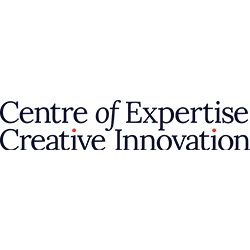SMEs represent a very important part of the European economy today, and within this SME group the creative sector is recently one of the fastest growing sectors. Our paper studies the innovation management of 105 creative SMEs in Flanders and the Netherlands, based on the innovation diagnostic instrument, developed by Mazzarol & Reboud (2006). On the side of the „innovation climate‟ we identified many stimulating factors such as the well developed infrastructure and proximity of logistics and suppliers and an innovative and stimulating life style in the global area of Flanders and the Netherlands. However, we identified many restricting legislations and regulations that seem to hamper seriously most creative SMEs. Above that, many creative SMEs fail to find sufficient access to capital to invest in their growing innovative activities. We observe that the Dutch creative SMEs find more easily access to external financial resources and governmental support and subventions than their Flemish colleagues. Finally, the use of managerial tools like a SWOT analysis or setting up a solid financial or business plan seems very uncommon but required among creative SMEs.
DOCUMENT

This article studies the innovation management of 105 creative SMEs in Flanders and the Netherlands. This region appears to have an innovative climate and stimulating life style, well developed infrastructure and proximity of logistics and suppliers. However, we identified many restricting legislations and regulations that hamper creative SMEs. Above that, creative SMEs fail to find sufficient access to capital to invest in their growing innovative activities. Dutch creative SMEs find more easily access to external financial resources and governmental support than their Flemish colleagues. Finally, the use of managerial and financial tools seems uncommon but required among creative SMEs.
DOCUMENT

Het Nederlands Openluchtmuseum (NOM) wil actief bijdragen aan een duurzame samenleving met zijn kennis van materialen, producten, diensten en culturele tradities die eeuwenlang functioneerden binnen circulaire gemeenschappen. Ondanks technologische vernieuwing en globalisering heeft het NOM de overtuiging dat deze historische kennis kan bijdragen aan duurzame producten voor de toekomst. Het NOM wil een structurele samenwerking met de creatieve sector om meetbare impact te realiseren binnen en buiten het museum voor de transitie naar een circulaire samenleving. Daarvoor wil het graag zijn collectie en kennis toegankelijk maken voor ontwerpers. Belangrijke praktijkvragen daarbij zijn: Welke rol kan het museum spelen i.s.m. ontwerpers? Hoe kan relevante kennis van het NOM toegankelijk en toepasbaar worden gemaakt voor ontwerpers? Hoe creëer je samen met ontwerpers de gewenste impact in de samenleving? Op basis hiervan is de onderzoeksvraag geformuleerd: Hoe kunnen maatschappelijke organisaties zoals het NOM relevante kennis en artefacten toegankelijk en toepasbaar maken voor ontwerpers t.b.v. meetbare impact voor een circulaire samenleving? Deze onderzoeksvraag is vertaald naar enkele sub-vragen over definities van duurzaamheid en circulariteit, de verwachte rollen van museum en ontwerpers, de gewenste structuur van samenwerking en over de rol van prototypen om de gewenste impact te realiseren. Naast het NOM als MKB, participeren in dit project twee creatieve ondernemers (1 MKB, 1 ZZP-er) die zijn geselecteerd op basis van hun specifieke ontwerpkwaliteiten, hun ervaringen in samenwerken met partners en hun kennis van circulair ontwerp. Samen met docent-onderzoekers en ontwerpstudenten van ArtEZ onderzoeken zij deze vragen. De belangrijkste projectresultaten zijn: prototypen, getest op gewenste maatschappelijke impact; een rapport dat beschrijft hoe het NOM kan samenwerken met de creatieve sector om bij te dragen aan ‘Nederland circulair’; en presentatie- en netwerkbijeenkomsten om kennis te delen en te bouwen aan het netwerk van stakeholders om beoogde impact te realiseren.
A unique testing ground where the creative sector and education work together to better understand the possibilities around volumetric video capturing. Within a volumetric studio, dozens of cameras capture all the movements of a living subject simultaneously. These recordings are converted into a fully moving and digital image, which results in an image that is barely distinguishable from reality. Chronosphere gives content creators and scientists the unique opportunity to experiment with volumetric capturing, using the newest volumetric studio within De Effenaar. There is room for a total of twenty projects, and proposals can be submitted.Partners:De Effenaar 4DR Studios Wildvreemd Natlab 360 verbeelding Dutch Rose Media Hyperspace Institute Fontys Hogescholen TU/e Center for Humans & Technology
This project establishes a collaborative network centered around the Amsterdam Museum, comprising key stakeholders from prominent cultural institutions, including the Centraal Museum Utrecht and the Rotterdam Museum. The consortium is designed to explore the transformative potential of co-creation in museums, focusing on enhancing visitor engagement, fostering inclusivity, and integrating digital technologies into cultural practices. Key personnel will provide interdisciplinary expertise in communication and cultural heritage, facilitating a robust understanding of stakeholder dynamics and collaborative processes. The research aims to analyze how co-creation can bridge the gap between museums and their diverse audiences, creating a sense of ownership and connection. Initial observational findings suggest that co-creation practices significantly enhance visitor experiences while revealing stakeholders' desires for deeper collaborative opportunities. To achieve these objectives, qualitative methods such as semi-structured interviews, focus groups, and ethnographic observations will be employed, delivering rich insights into the impact of co-created programming. An essential output of this project will be an academic publication aimed at foundational research on effective co-creation practices within the cultural sector. Furthermore, the consortium will pursue a larger grant application to secure sustainable funding for ongoing research initiatives, ensuring the long-term viability and impact of this collaborative network. This will not only advance academic discourse but also facilitate knowledge transfer between academia and museums, enriching cultural engagement strategies. Ultimately, the project aspires to enhance the visibility and societal relevance of cultural institutions, fostering innovative solutions to contemporary challenges through collaborative research and community involvement.
Centre of Expertise, onderdeel van Amsterdamse Hogeschool voor de Kunsten, Hogeschool van Amsterdam, Hogeschool Inholland, +1
